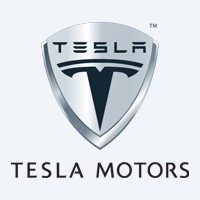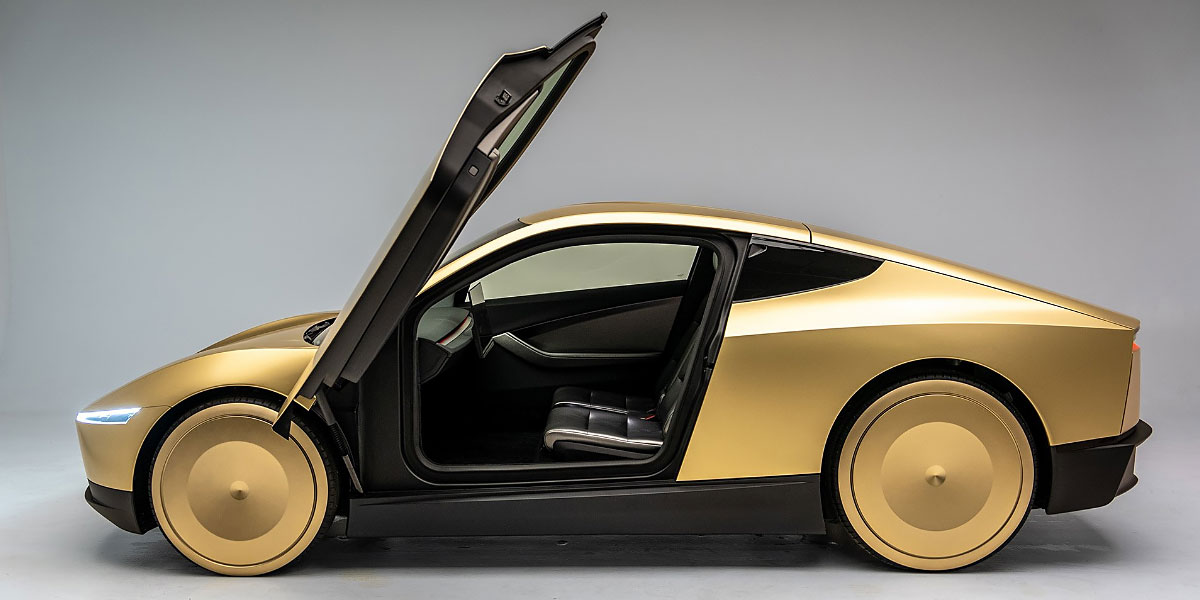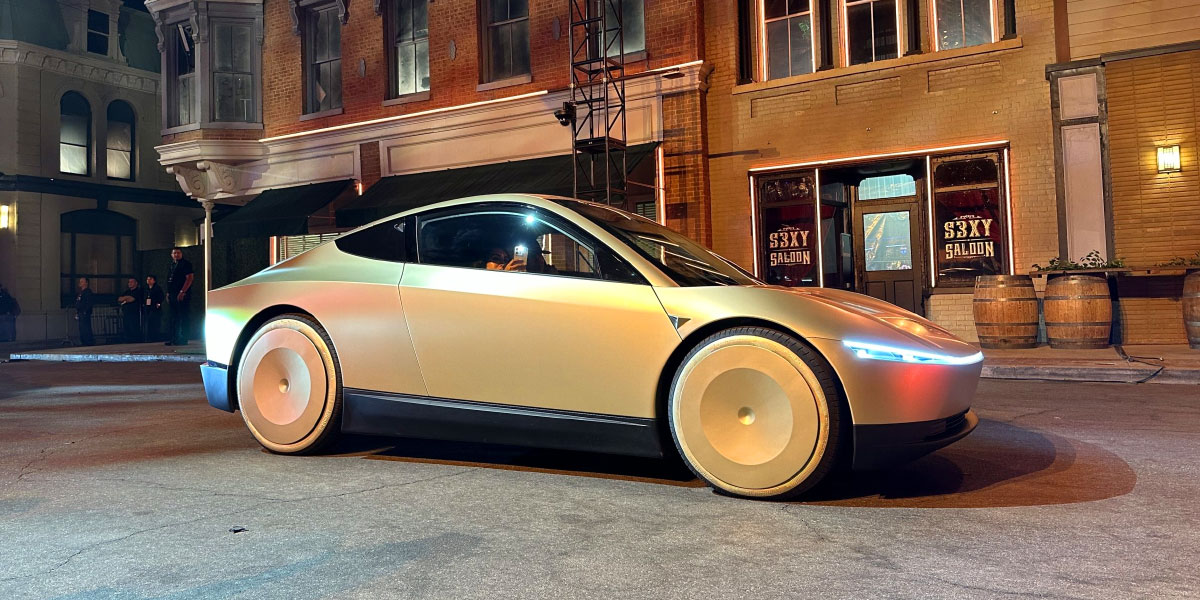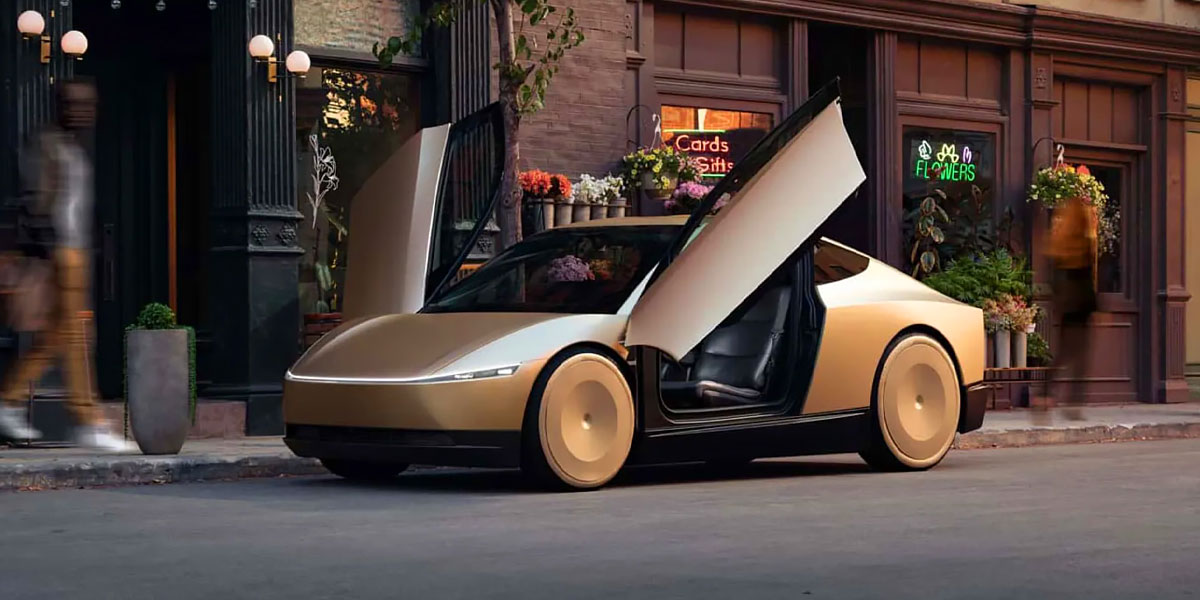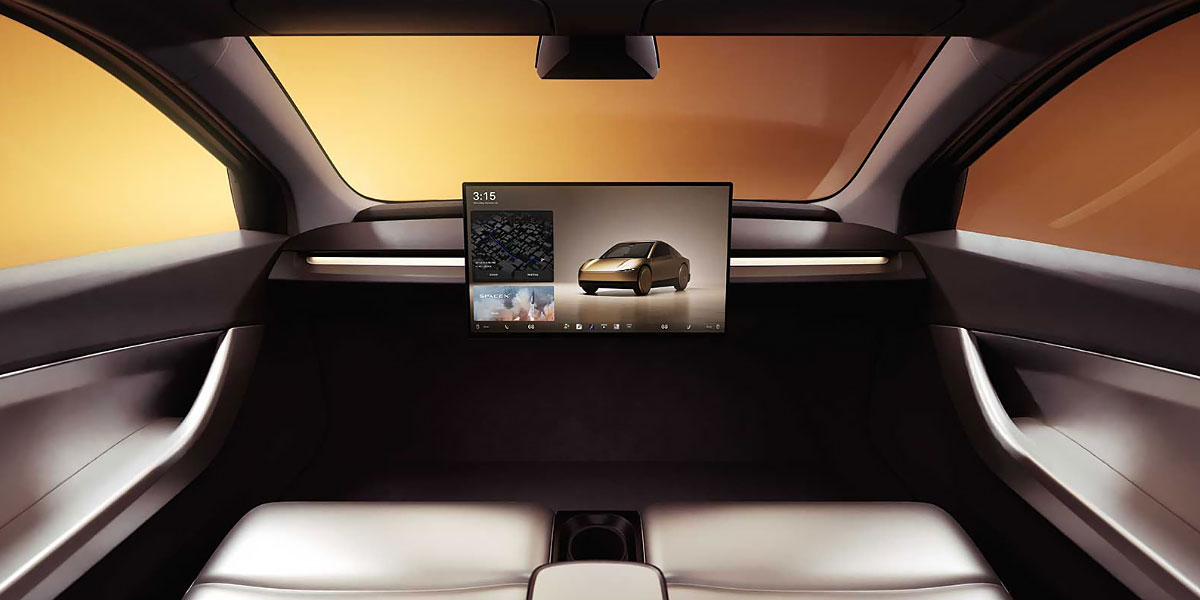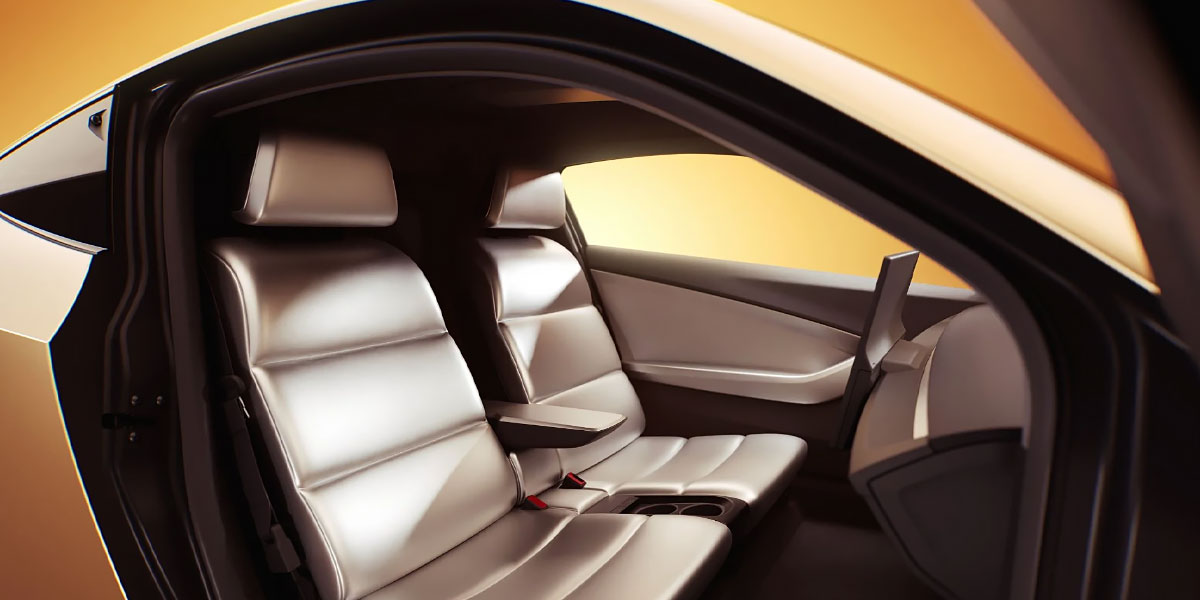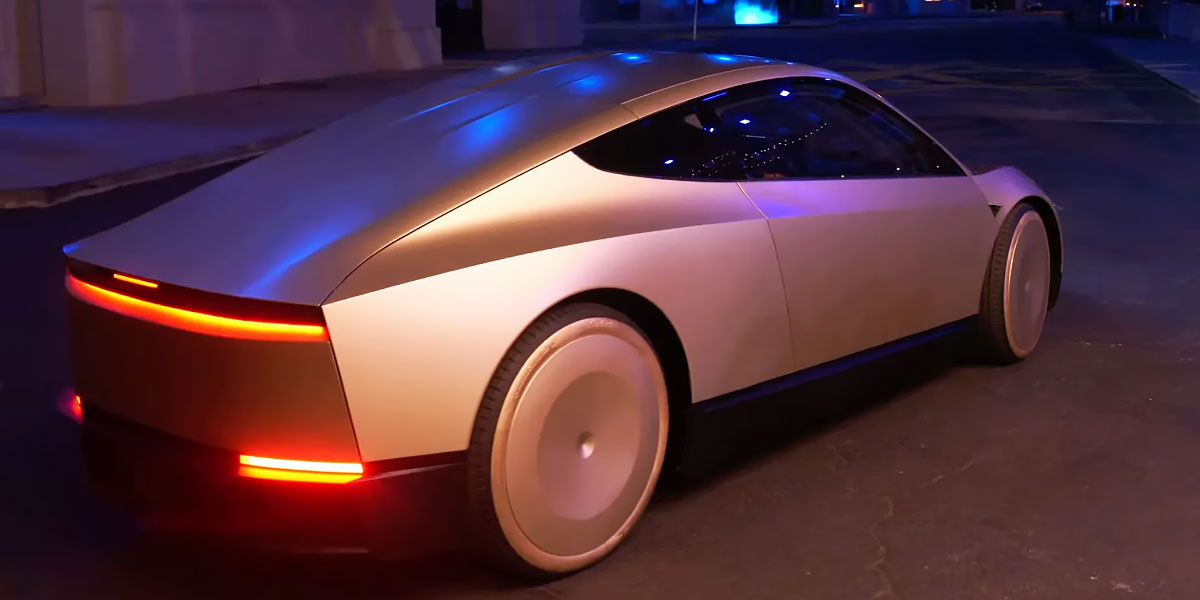Tesla Cybercab
User Rating: 4.79 / 5





The Tesla Cybercab is a two-seat fully autonomous EV coupe designed for ride-hailing, launching in 2026 with a price tag of $30,000 (€27,700). Featuring a 35 kWh battery, 320 km (199 mi) range, 120 km/h (75 mph) top speed, and Full Self-Driving (FSD) technology, it promises efficient, hands-free urban commuting.
Starting price: US$ 30000 *
Technical Specifications:
| manufactured in | USA |
| model year | 2026 |
| electric range (km) | 320 |
| battery (kWh) | 35 |
| max. speed (km/h) | 120 |
| car type | coupe |
| drive type | RWD |
* Minimum price set by the manufacturer, excluding taxes and additional options
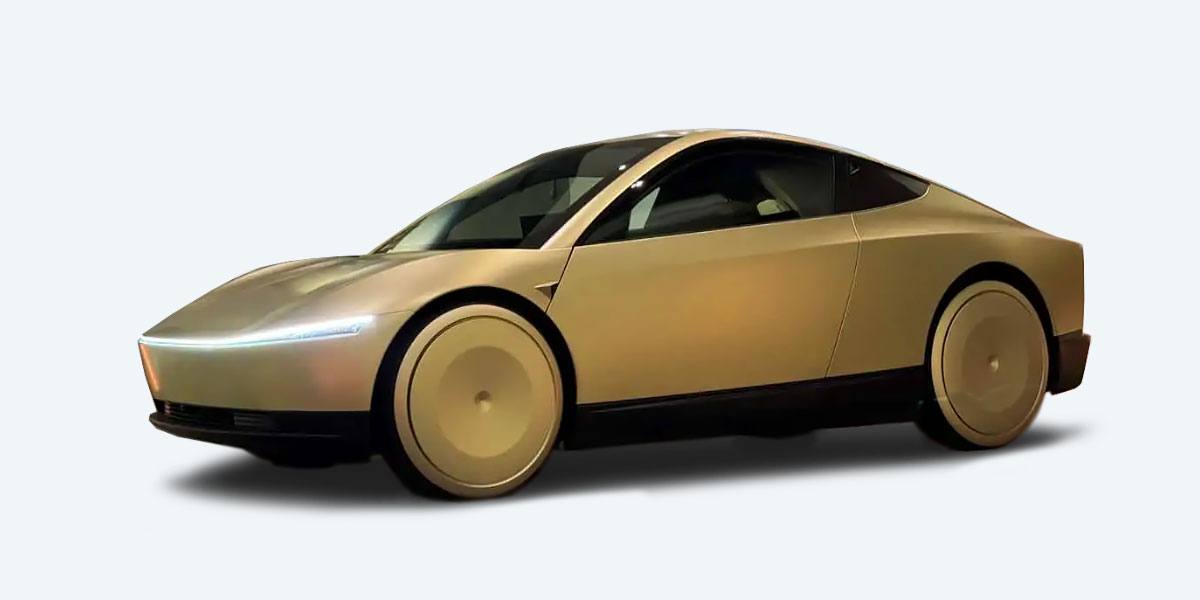
Exterior and Interior photos of Tesla Cybercab
Tesla Cybercab Review
Tesla Cybercab: What You Need to Know
Meet the Tesla Cybercab, the latest wild card from Elon Musk's playbook—and possibly the future of ride-hailing. Unveiled in 2024 and expected to go on sale by 2026, this two-seat, fully autonomous electric coupe is shaking up the way we think about cars, taxis, and everything in between. With a targeted price of $30,000 (around €27,700), a 320 km (199 mi) range, and Tesla’s Full Self-Driving (FSD) system running the show, the Cybercab walks the tightrope between brilliance and head-scratching limitation. It’s minimalist, futuristic, and ready to ghost the steering wheel. But is the world ready for it?
Cybercab Price: Budget EV or Premium Robotaxi?
Let’s talk dollars—or euros, if you’re across the pond. Tesla’s aiming to keep the Cybercab at a modest $30,000, which shakes out to roughly €27,700. For context, that's less than half the price of a new Model S and undercuts even the Model 3. That puts it squarely in budget EV territory. But this isn't just another econobox. We're talking inductive charging, FSD hardware, and a two-seat cocoon that feels more iPad on wheels than compact car. For the price, you're getting bleeding-edge autonomy with zero driving controls and a premium-looking shell to match.
Range: How Far Can It Really Go?
Tesla says the Cybercab will go up to 320 km (199 miles) on a full charge, and while that may not sound wild next to a Model Y, remember—you’re only sipping juice from a 35 kWh battery. That’s roughly 5.5 miles per kWh, which is light years ahead of most EVs. Think of it this way: you’re getting close to 200 miles (320 km) out of a battery pack that's smaller than what many plug-in hybrids carry. This range sweet spot is ideal for city runs, short commutes, and those pesky Uber Eats shifts you never asked for. Wireless charging just sweetens the deal.
Battery: Small but Mighty
At just 35 kWh, the Cybercab’s battery sounds pint-sized next to the 75-100 kWh monsters in the rest of Tesla’s garage. But with an ultra-lightweight build and slippery aerodynamics, it punches well above its weight. Efficiency is the name of the game here. And with Tesla whispering about possible battery packs under 50 kWh delivering up to 300 miles (483 km), it’s clear the goal isn’t range bragging—it’s cost and energy savings for the urban grid. No plug needed either—just glide onto a charging pad and watch it juice up while you snack on fries.
Speed: Enough to Keep Up
Clocking in at a top speed of 120 km/h (75 mph), the Cybercab won’t be setting any Nürburgring records. But that’s not the point. This robotaxi isn’t built for triple-digit highway blasts—it’s tuned for urban mobility where the speed limit rarely creeps past 40 mph (65 km/h). Tesla’s demo had it creeping along at just 5 mph (8 km/h), enough to avoid a pedestrian but not your morning latte. Still, it’s enough juice to make it from one downtown hub to another, quietly and cleanly. And without a driver, who’s in a rush anyway?
Exterior: Cyberpunk Meets Commuter Pod
If the Cybertruck and a Porsche 928 had a baby, it might look like the Cybercab. It’s low, curvy, and wrapped in a metallic champagne gold finish that glints just enough without screaming “look at me.” Long LED strips up front and back give it that Blade Runner glow, while butterfly doors add a supercar flourish that feels more Las Vegas than San Francisco. Slim tires and a compact footprint reinforce its efficiency-first DNA. It’s flashy without being shouty—perfect for city streets where form and function need to grab attention fast.
Interior: Minimalist Theater on Wheels
The cabin is pure Tesla futurism—minimalist to a fault, yet curiously plush. There’s no wheel, no pedals, not even a gear shifter. What you do get is a giant 20.5-inch touchscreen that’s less dashboard and more IMAX. It’s built for Netflix and chill, not torque and tire smoke. The two lounge-style seats are comfy enough for long waits or short trips, but that’s all you get—two seats. No back row, no third passenger, no dogs unless they sit on your lap. It’s the Uber Pool without the pool. For solo riders or duos, though, it's peak comfort.
Cybercab Comparison: How Does It Stack Up?
Against rivals like Waymo’s Chrysler Pacifica or Cruise’s Origin, the Cybercab stands out for its compactness and polish—but loses out on capacity. Most autonomous shuttles seat four or more, while this one taps out at two. That’s by design, of course—Tesla’s banking on data that says 80% of car trips in the U.S. have only one or two passengers. Still, families and friend groups might find themselves calling two cabs instead of one. In exchange, you get more tech per inch, cleaner lines, and a price tag that undercuts the competition.
Availability: When and Where?
Tesla plans to start Cybercab production in 2026, with the first units hitting streets in California and Texas—likely the only states gutsy enough to approve hands-free robotaxis on public roads. Musk claims the Full Self-Driving software will be ready by 2025 for unsupervised driving. That’s a big claim, given the current need for human intervention in most Tesla FSD scenarios. But if the timelines hold (big if), we could see fleets of gold-painted Cybercabs rolling up to sidewalks in under two years. Europe? Don’t hold your breath just yet.
Cybercab: Final Thoughts from the Front Row
The Cybercab isn't for everyone—and that's the point. It's for the solo commuter, the city dweller, the tech-lover who’d rather scroll TikTok than hold a steering wheel. At $30,000 (€27,700), it undercuts most EVs and flirts with used car prices, all while promising a zero-emission, hands-free lifestyle. It’s a glimpse into a world where cars are no longer driven, just ridden in. Whether that’s a utopia or dystopia depends on how ready you are to give up control—and maybe, a little bit of legroom.
Manufacturer: Tesla Motors
Watch the Video Overview
Comparison:
The Tesla Cybercab enters the urban EV scene as a two-seat, fully autonomous coupe that rewrites the rules for daily mobility—but it’s not alone. To really see if the Cybercab has the right wiring to dominate this niche, we’re putting it up against similarly sized electric coupes and urban pods: Microlino Lite, Candy eCab, Eli ZERO Plus, and Citroën Ami. These micro EVs share the Cybercab’s focus on affordability, compact design, and inner-city agility—but can they compete with Tesla’s tech-laden dream?
Range
With a projected 200 miles (320 km) from its 35 kWh battery, the Cybercab quietly laps the competition. The Microlino Lite musters around 62 miles (100 km) on a charge, while the Citroën Ami limps in at 47 miles (75 km). Eli ZERO Plus gives a more respectable 90 miles (145 km), and Candy eCab squeaks past with 100 miles (160 km). Cybercab’s range looks almost luxurious in this crowd, making it the go-to for riders who want to zip across town *and* back—without hunting for a charger.
Acceleration
This isn’t a drag race, but the Cybercab can still move with purpose. Top speed caps at 75 mph (120 km/h), leaving the Citroën Ami (28 mph / 45 km/h) and Microlino Lite (56 mph / 90 km/h) looking like electric scooters by comparison. The Eli ZERO Plus flirts with 25 mph (40 km/h), while Candy eCab tops out at 50 mph (80 km/h). For urban autonomy, Cybercab delivers speed that feels almost decadent—fast enough for highways, unlike the others stuck in slow lanes and side streets.
Power
Tesla’s keeping power specs under wraps, but based on performance figures and battery efficiency (5.5 mi/kWh), we’re talking about a motor in the 80–100 hp (60–75 kW) range. Compare that to the Microlino Lite and Citroën Ami, both sitting under 20 hp (15 kW), and the Eli ZERO Plus crawling at 5.4 hp (4 kW). Candy eCab offers a modest 12 hp (9 kW). The Cybercab is in a different power league—closer to “car” than “golf cart,” and it shows in how it handles and accelerates.
Charging Time
Thanks to inductive charging and a relatively small 35 kWh battery, the Cybercab aims for fast, seamless top-ups. Expect full wireless recharge in around 30–40 minutes on a 150 kW pad. The Microlino and Eli ZERO need 4 hours or more on standard AC plugs. Citroën Ami manages a full charge in 3 hours on 220V, and Candy eCab requires nearly 6 hours. Tesla’s pad-and-go convenience wipes the floor with plug-based setups—ideal for a robotaxi constantly on the move.
Price
The Cybercab undercuts expectations at $30,000 (€27,600), given its tech stack and range. Citroën Ami wins on sticker shock at $7,500 (€6,900), while Microlino Lite starts closer to $18,000 (€16,500). Eli ZERO Plus sits at $11,900 (€11,000), and Candy eCab hovers near $13,500 (€12,400). Yes, Cybercab costs more—but it’s also the only one capable of driving you autonomously, wirelessly charging itself, and covering triple the distance. It’s a robotaxi dressed like a compact coupe, not a glorified golf cart with doors.
F.A.Q.:
What is the range of this electric vehicle on a single charge?
The Tesla Cybercab offers a driving range of approximately 199 miles (320 km) on a single charge, thanks to its lightweight design and 35 kWh battery pack.
How long does it take to fully charge this autonomous EV?
The Cybercab supports inductive (wireless) charging, and while exact times aren’t disclosed, a 35 kWh battery typically charges in about 5–6 hours using a Level 2 charger or within 30–40 minutes at a DC fast charger.
What is the top speed of this self-driving coupe?
The maximum speed of the Tesla Cybercab is 75 mph (120 km/h), which is ideal for urban and suburban autonomous transport scenarios.
What is the total power output?
While Tesla hasn’t released official figures, the Cybercab’s power is optimized for efficiency rather than speed, with estimates placing it below 200 horsepower (149 kW) for smoother, safer autonomous driving.
What is the battery capacity?
The Tesla Cybercab uses a 35 kWh battery, delivering strong energy efficiency at around 5.5 miles per kWh, making it highly economical for daily use.
What is the price of this autonomous EV?
The Tesla Cybercab is expected to start at around $30,000 (€27,880), offering a highly affordable entry point into fully autonomous electric transportation.
Can this vehicle be used for long-distance travel?
With a range of just under 200 miles (320 km), the Cybercab is best suited for city and suburban travel. Long trips would require frequent recharging, limiting practicality for extended journeys.
Are electric vehicles like this one cheaper to operate than gasoline cars?
Yes, the Cybercab’s operating cost is estimated at just $0.20 per mile (€0.19), significantly lower than gas vehicles due to reduced energy and maintenance expenses.
How many people can this type of vehicle seat?
The Tesla Cybercab is a two-seater, designed for solo riders or couples, making it less ideal for families or group travel but perfect for efficient personal transport.
Is this EV eligible for wireless charging?
Yes, the Cybercab supports inductive wireless charging, eliminating the need for cables and enabling fully autonomous energy top-ups at compatible stations.

